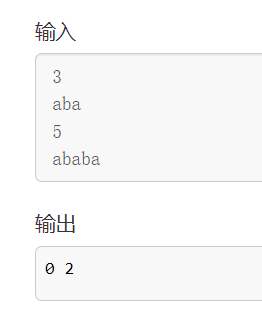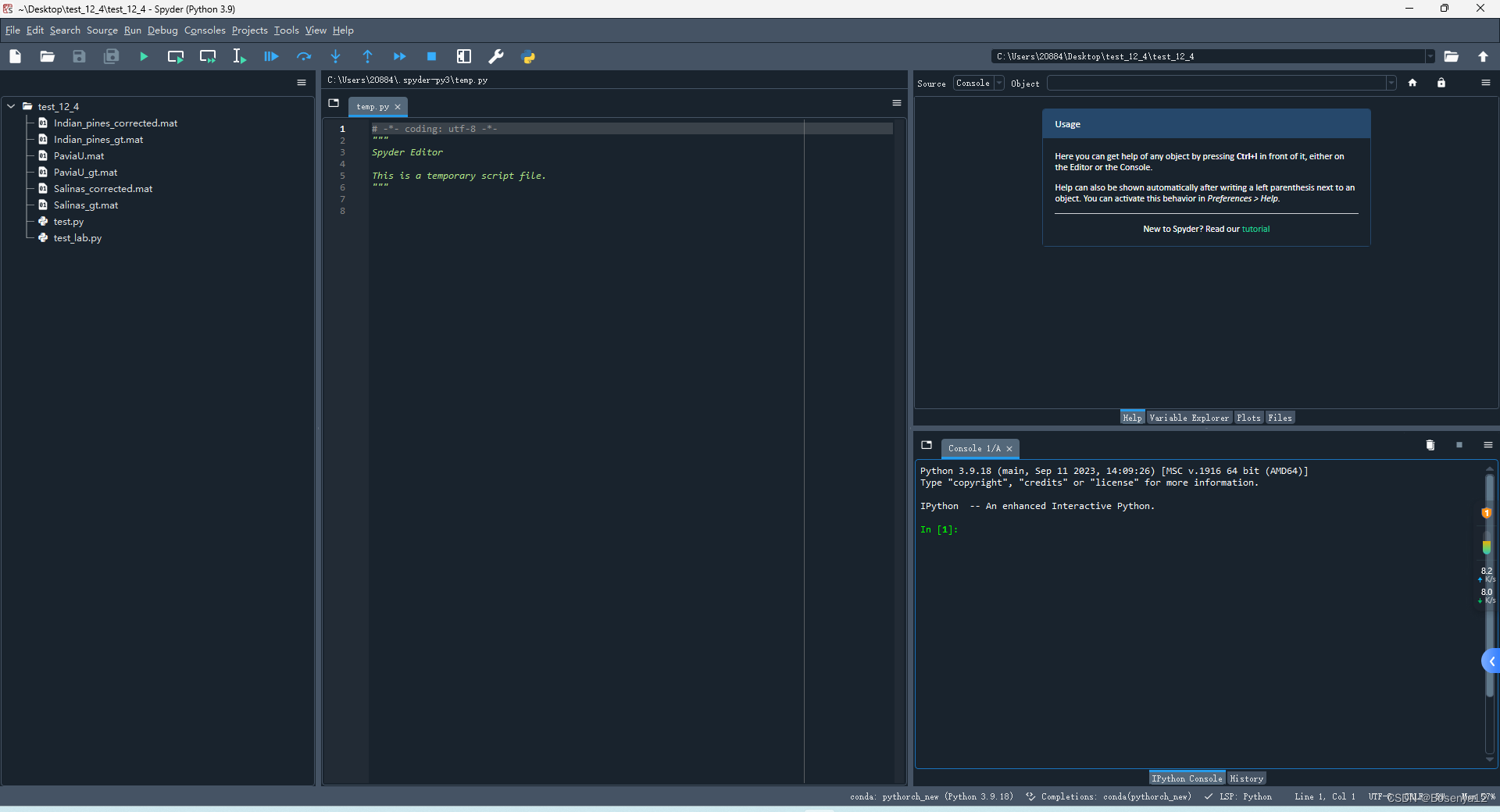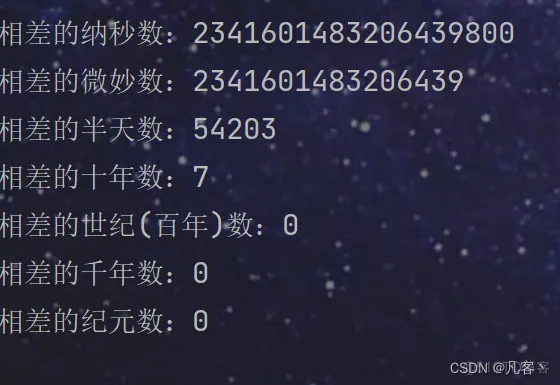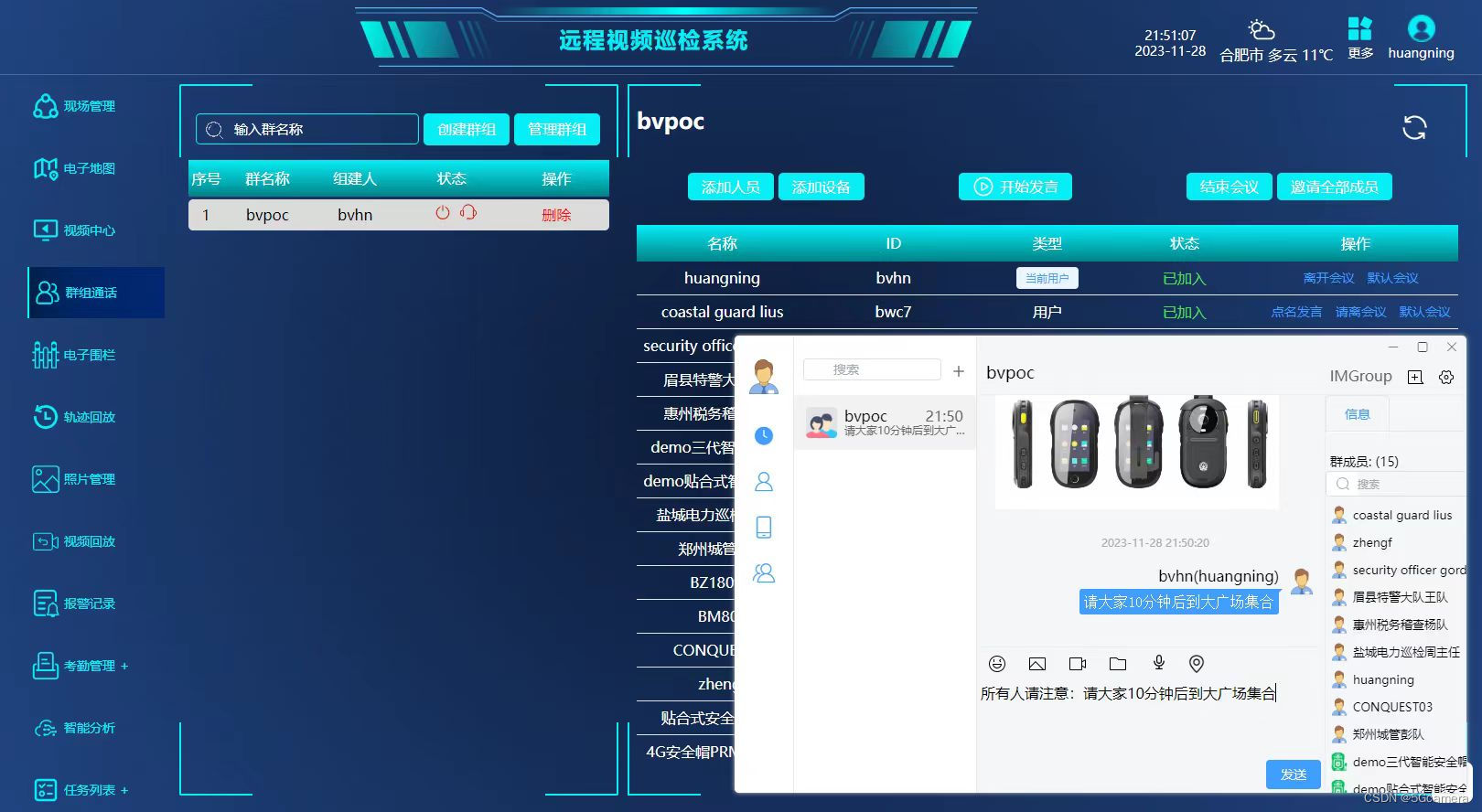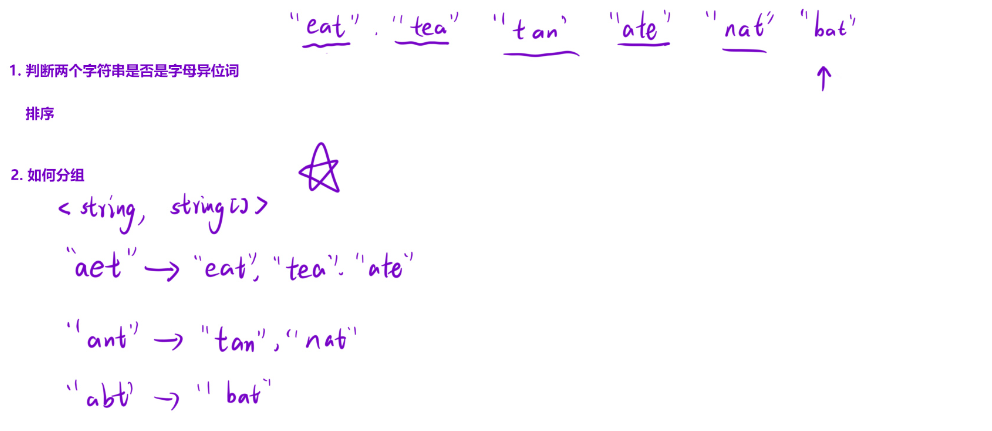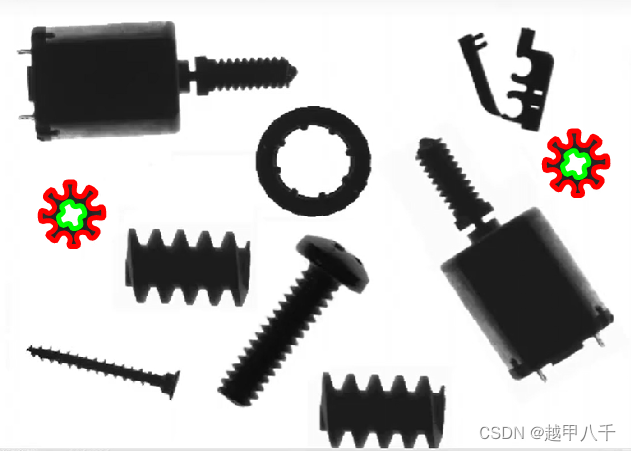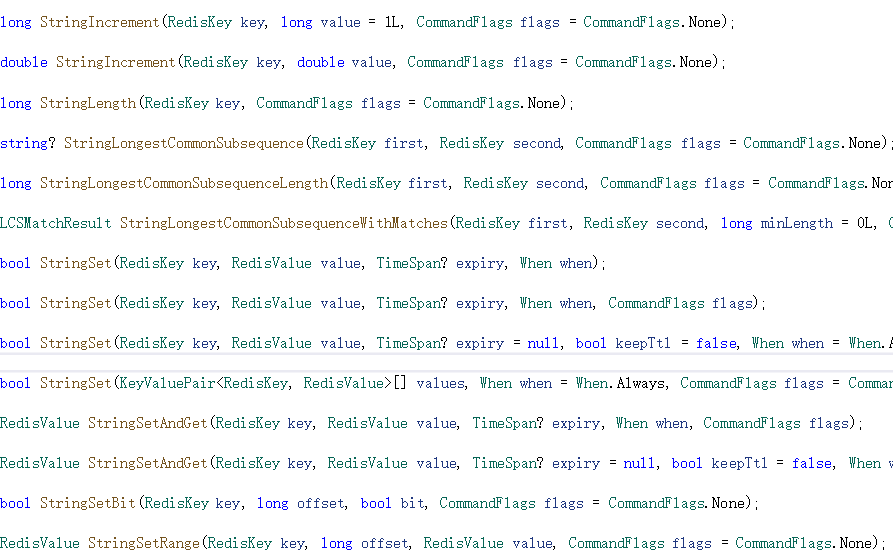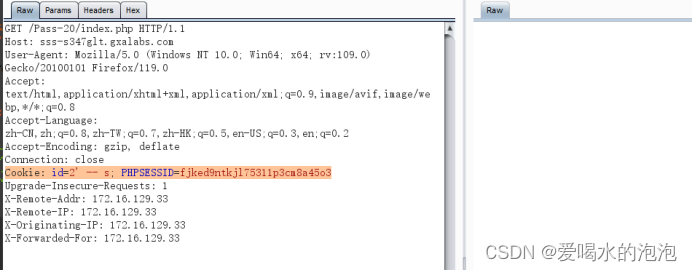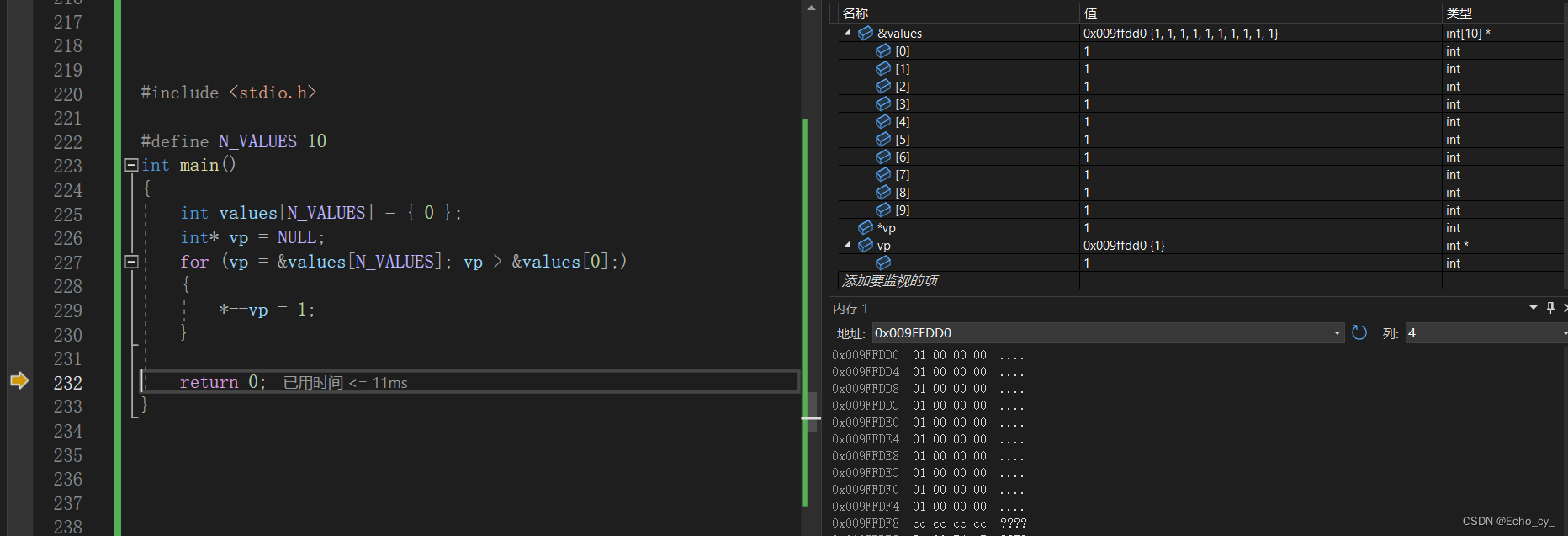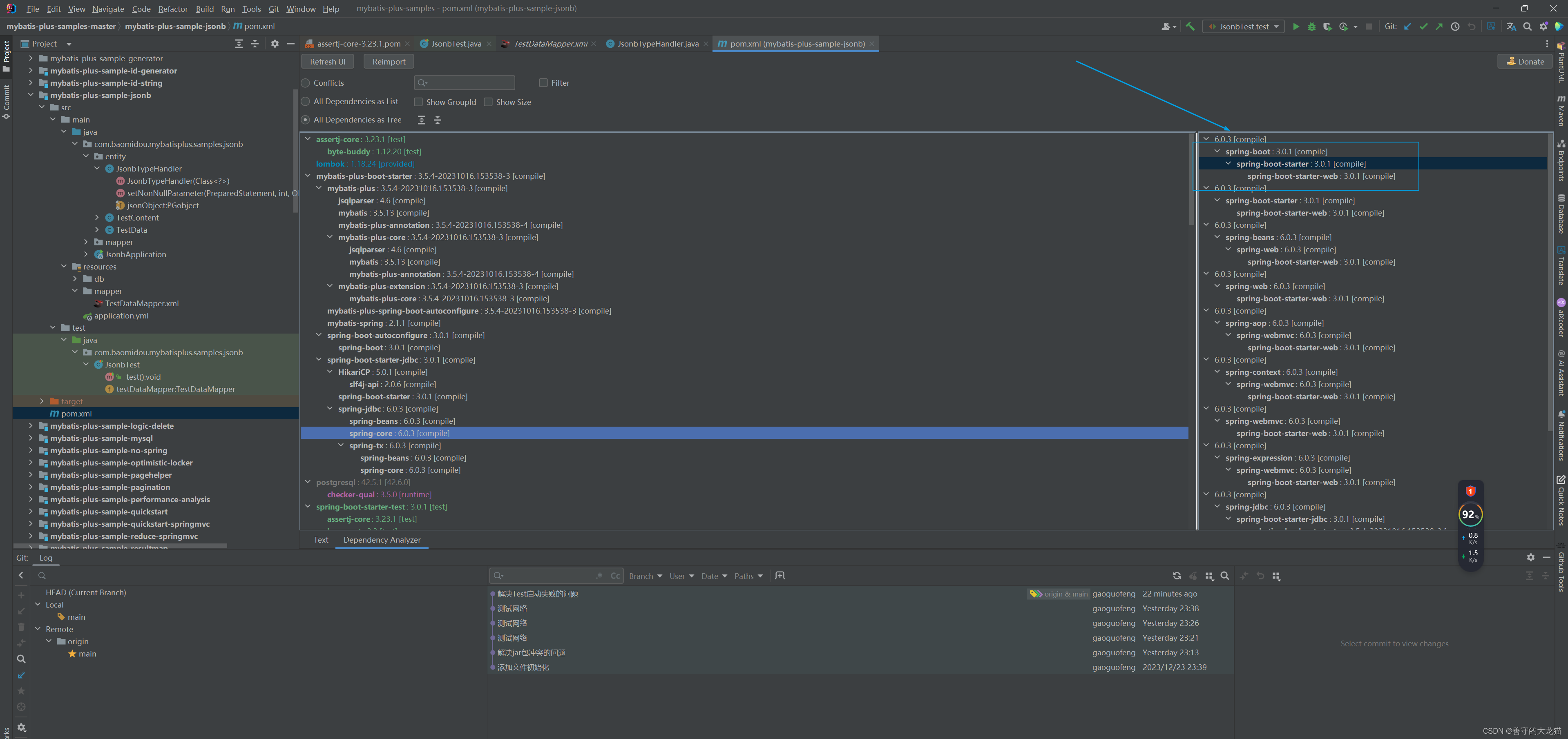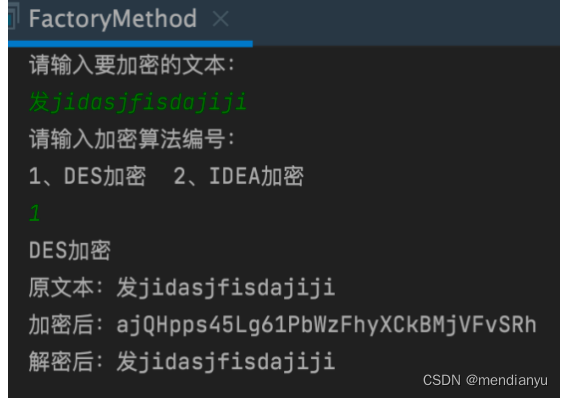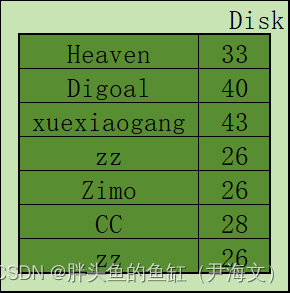目录
mybatis 二级缓存配置有两处
全局设置
mapper 设置
测试代码
执行结果
源码执行逻辑
创建 SqlSession
二级缓存配置是否添加
解析 cache 标签
XMLMapperBuilder
MapperBuilderAssistant
CacheBuilder
PerpetualCache
SerializedCache
LoggingCache
将 cache 对象添加到 MappedStatement 对象中
XMLStatementBuilder
MapperBuilderAssistant
查询数据
调用 CachingExecutor 的 query()
调用 TransactionalCacheManager 的 getObject()
调用 SqlSession 的 commit()
调用 CachingExecutor 的 commit()
调用 TransactionalCacheManager 的 commit()
调用 TransactionalCache 的 commit()
缓存失效
执行非 select 操作
XMLStatementBuilder
在 mapper 的 select 标签中设置 flushCache 为 true
CachingExecutor
缓存禁用
xml 中去掉 标签
全局配置
总结
在之前写的 mybatis 文章基础上
mybatis的生命周期-CSDN博客
mybatis的一级缓存使用以及禁用-CSDN博客
mybatis 二级缓存配置有两处
两个一起设置才能生效
全局设置
<?xml version="1.0" encoding="UTF-8" ?>
<!DOCTYPE configuration
PUBLIC "-//mybatis.org//DTD Config 3.0//EN"
"https://mybatis.org/dtd/mybatis-3-config.dtd">
<configuration>
<!-- 配置文件上下文使用的属性值引用外部文件 -->
<properties resource="jdbc.properties"></properties>
<settings>
<setting name="mapUnderscoreToCamelCase" value="true"/>
<!-- 默认启用二级缓存 -->
<setting name="cacheEnabled" value="true"/>
</settings>
<!-- 定义别名,在 mapper 的返回类型中使用 -->
<typeAliases>
<typeAlias type="cn.hahaou.mybatis.cache.leveltwo.entity.Role" alias="role"/>
</typeAliases>
<!-- 定义数据库信息,默认使用 development 数据库构建环境 -->
<environments default="test">
<environment id="test">
<!-- 采用 jdbc 事务管理 -->
<transactionManager type="JDBC"/>
<!-- 配置数据库连接信息 -->
<dataSource type="POOLED">
<property name="driver" value="${driver}"/>
<property name="url" value="${url}"/>
<property name="username" value="${username}"/>
<property name="password" value="${password}"/>
</dataSource>
</environment>
</environments>
<!-- 定义映射器 -->
<mappers>
<mapper class="cn.hahaou.mybatis.cache.leveltwo.mapper.LevelTwoRoleMapper"/>
</mappers>
</configuration>mapper 设置
<?xml version="1.0" encoding="UTF-8" ?>
<!DOCTYPE mapper
PUBLIC "-//mybatis.org//DTD Mapper 3.0//EN"
"https://mybatis.org/dtd/mybatis-3-mapper.dtd">
<mapper namespace="cn.hahaou.mybatis.cache.leveltwo.mapper.LevelTwoRoleMapper">
<!-- 启用二级缓存标签 -->
<cache />
<resultMap id="roleMap" type="role">
<id column="id" property="id" javaType="long" jdbcType="BIGINT"></id>
<result column="role_name" property="roleName" javaType="string" jdbcType="VARCHAR"></result>
<result column="note" property="note"></result>
</resultMap>
<select id="getRole" parameterType="long" resultType="role">
select * from t_role t where t.id = #{id}
</select>
</mapper>测试代码
package cn.hahaou.mybatis.cache.leveltwo;
import cn.hahaou.mybatis.cache.leveltwo.mapper.LevelTwoRoleMapper;
import cn.hahaou.util.MybatisUtils;
import org.apache.ibatis.session.SqlSession;
/**
* 二级缓存测试
*/
public class LevelTwoCacheTest {
public static void main(String[] args) {
{
try (SqlSession sqlSession = MybatisUtils.openSession()){
LevelTwoRoleMapper roleMapper = sqlSession.getMapper(LevelTwoRoleMapper.class);
roleMapper.getRole(1L);
sqlSession.commit();
}
}
System.out.println("开启新session查询");
{
try (SqlSession sqlSession = MybatisUtils.openSession()){
LevelTwoRoleMapper roleMapper = sqlSession.getMapper(LevelTwoRoleMapper.class);
roleMapper.getRole(1L);
sqlSession.commit();
}
}
}
}
执行结果
2023-12-24 16:32:10,019 [main] DEBUG org.apache.ibatis.logging.LogFactory: Logging initialized using 'class org.apache.ibatis.logging.log4j.Log4jImpl' adapter.
2023-12-24 16:32:10,100 [main] DEBUG org.apache.ibatis.datasource.pooled.PooledDataSource: PooledDataSource forcefully closed/removed all connections.
2023-12-24 16:32:10,101 [main] DEBUG org.apache.ibatis.datasource.pooled.PooledDataSource: PooledDataSource forcefully closed/removed all connections.
2023-12-24 16:32:10,101 [main] DEBUG org.apache.ibatis.datasource.pooled.PooledDataSource: PooledDataSource forcefully closed/removed all connections.
2023-12-24 16:32:10,101 [main] DEBUG org.apache.ibatis.datasource.pooled.PooledDataSource: PooledDataSource forcefully closed/removed all connections.
2023-12-24 16:32:10,148 [main] DEBUG org.apache.ibatis.cache.decorators.LoggingCache: Cache Hit Ratio [cn.hahaou.mybatis.cache.leveltwo.mapper.LevelTwoRoleMapper]: 0.0
2023-12-24 16:32:10,150 [main] DEBUG org.apache.ibatis.transaction.jdbc.JdbcTransaction: Opening JDBC Connection
2023-12-24 16:32:10,347 [main] DEBUG org.apache.ibatis.datasource.pooled.PooledDataSource: Created connection 510109769.
2023-12-24 16:32:10,348 [main] DEBUG org.apache.ibatis.transaction.jdbc.JdbcTransaction: Setting autocommit to false on JDBC Connection [com.mysql.cj.jdbc.ConnectionImpl@1e67a849]
2023-12-24 16:32:10,355 [main] DEBUG org.apache.ibatis.logging.jdbc.BaseJdbcLogger: ==> Preparing: select * from t_role t where t.id = ?
2023-12-24 16:32:10,374 [main] DEBUG org.apache.ibatis.logging.jdbc.BaseJdbcLogger: ==> Parameters: 1(Long)
2023-12-24 16:32:10,395 [main] DEBUG org.apache.ibatis.logging.jdbc.BaseJdbcLogger: <== Total: 1
2023-12-24 16:32:10,401 [main] DEBUG org.apache.ibatis.transaction.jdbc.JdbcTransaction: Resetting autocommit to true on JDBC Connection [com.mysql.cj.jdbc.ConnectionImpl@1e67a849]
2023-12-24 16:32:10,407 [main] DEBUG org.apache.ibatis.transaction.jdbc.JdbcTransaction: Closing JDBC Connection [com.mysql.cj.jdbc.ConnectionImpl@1e67a849]
2023-12-24 16:32:10,407 [main] DEBUG org.apache.ibatis.datasource.pooled.PooledDataSource: Returned connection 510109769 to pool.
开启新session查询
2023-12-24 16:32:10,409 [main] DEBUG org.apache.ibatis.cache.decorators.LoggingCache: Cache Hit Ratio [cn.hahaou.mybatis.cache.leveltwo.mapper.LevelTwoRoleMapper]: 0.5从日志可以得知
第一个 session 查询缓存命中比率为 0,执行 jdbc 查询。
第一个 session 查询缓存命中比率为 0.5,不执行 jdbc 查询。
源码执行逻辑
创建 SqlSession

先通过 Configuration 创建 Executor

Configuration 中的变量 cacheEnabled 对应的值是全局配置的 cacheEnabled 的值,如果未指定,默认值为 true。最终结果返回了一个 CachingExecutor,通过装饰器模式封装了一个 SimpleExecutor。

二级缓存配置是否添加

其中,参数 MappedStatement 对应的是每个 mapper 中定义的用于执行 sql 操作的方法。获取其中的 cache 对象判断是否为空,不为空执行二级缓存逻辑。
解析 cache 标签
XMLMapperBuilder

在 XMLMapperBuilder 中解析 mapper 中定义的 cache 标签。

通过代码得知如下
type 未指定,默认值为 PERPETUAL,对应的是 PerpetualCache,与一级缓存一致。
eviction 未指定,默认值为 LRU,对应的是 LruCache,即缓存淘汰策略使用了 lru 算法。
readOnly 未指定,默认值为 false,但是又对结果进行了取反,所以结果是 true。对用后面的 SerializedCache。
MapperBuilderAssistant
调用 useNewCache() 通过 CacheBuilder 链式编程创建 Cache 对象。

设置 Configuration 的缓存对象为链式创建的。
CacheBuilder

通过 setDefaultImplementations() 得知,如果在调用 useNewCache() 创建 Cache 对象时变量typeClass 和 evictionClass 未指定,分别指定 PerpetualCache 和 LruCache。
在 build() 中循环当前类的 decorators 对象,对 PerpetualCache 使用装饰器模式包装。第一层为 LruCache。
在 setStandardDecorators() 对传入的 Cache 对象(实际为 PerpetualCache)进行装饰器模式包装处理。

鉴于是默认处理,所有最终的 cache 对象如下,中间通过内部变量 delegate 来进行引用。
SynchronizedCache
↓
LoggingCache 计算命中率
↓
SerializedCache 需要缓存的数据需要序列化
↓
LruCache 缓存淘汰策略
↓
PerpetualCache 最终保存缓存的对象PerpetualCache
最终存储的数据如下
id 为 mapper 全路径。一级缓存是常量字符串。
map 变量 cache 中,key 对应的是 CacheKey,value 对应的是返回的查询结果序列化后的字节数组。一级缓存是返回结果没做任何处理。

鉴于最终存储的结果是序列化后的字节数组,所以返回的对象需要实现序列化接口 Serializable。
SerializedCache

LoggingCache

针对每次查询请求对变量值进行计数累加,如果查询的数据在缓存中存在,命中数进行累加。

命中率计算=命中数/请求总数。
将 cache 对象添加到 MappedStatement 对象中
在 XMLMapperBuilder 中间接调用 XMLStatementBuilder 进行 crud sql 解析处理

XMLStatementBuilder
根据当前查询类型为 select,默认启用缓存。

看到这里感觉很熟悉,因为上面的 flushCache 是一级缓存的标识。
MapperBuilderAssistant
调用 addMappedStatement() 添加到 Configuration 中。

设置 MappedStatement 中二级缓存相关相关的变量
useCache 表示启用二级缓存
cache 表示缓存对象

通过链式编程方式赋值最终构建 MappedStatement 对象。
查询数据
通过 TransactionalCacheManager 这个中间对象来完成。
调用 CachingExecutor 的 query()

在上图中,从 MappedStatement 中获取 cache 对象和 useCache 的值来判断是否启用二级缓存,从上面的分析可以得出,这里 useCache 的判断用于判断当前 statement 的 SqlCommandType 的值,如果为 SELECT 就启用,否则不启用。
调用 TransactionalCacheManager 的 getObject()
通过 getObject() 传入 cache 对象判断对应的 TransactionalCache 在 TransactionalCacheManager 中是否存在
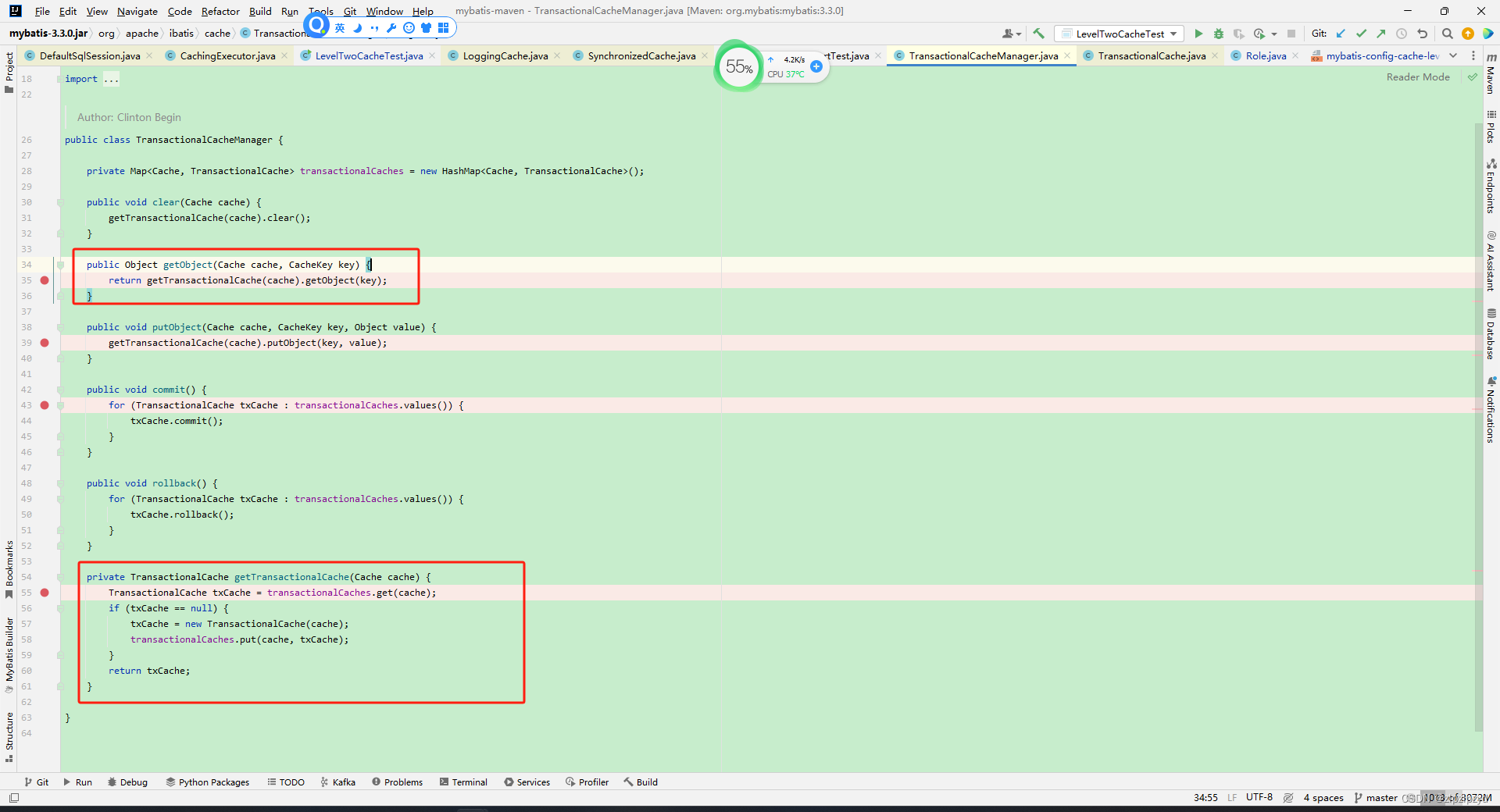
通过 cache 对象判断在 map 对象 transactionalCaches 中是否存在,不存在使用 TransactionalCache 包装添加到 transactionalCaches 中。
因为使用的装饰器模式,最终调用的是 PerpetualCache 中的 cache 变量。
通过 putObject() 传入 cache 对象判断对应的 TransactionalCache 在 TransactionalCacheManager 中是否存在,存在添加到 TransactionalCache 的 entriesToAddOnCommit 变量中。


调用 SqlSession 的 commit()

间接调用 CachingExecutor 的 commit()。
调用 CachingExecutor 的 commit()

调用 TransactionalCacheManager 的 commit()

对于 transactionalCaches 中的 value 值调用对应的 commit() 方法。
调用 TransactionalCache 的 commit()
间接调用 flushPendingEntries()

对应上面调用 putObject() 时向 entriesToAddOnCommit 中添加,因为使用的装饰器模式,最终添加到 PerpetualCache 中的 cache 变量。
其中,对于二级缓存调用 SqlSession 的 close() 也可以做到,对于忘记提交的情况,这里体现了补救措施。

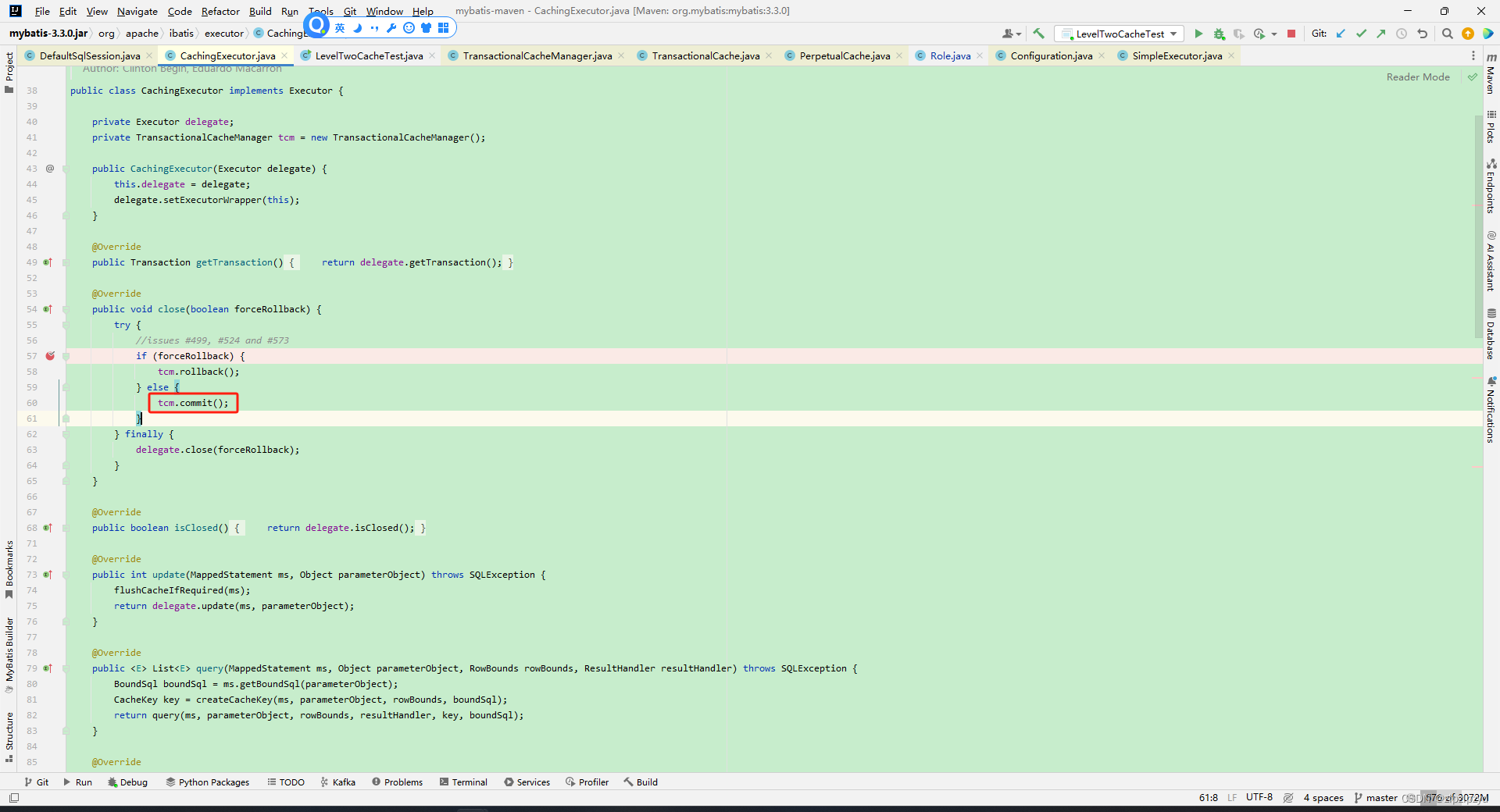
上面的测试代码使用了 java 7 中带的 try-with-resources 功能,括号中的变量只能是 Closeable 或者 AutoCloseable 的实现类,在编译器编译时自动添加 close() 防止流关闭的情况。
java中的Closeable与AutoCloseable-CSDN博客
缓存失效
有两种方式
执行非 select 操作
即 insert、delete、update。
XMLStatementBuilder

在执行非查询操作时,useCache 的值为 false,由于该值最终在 MappedStatement 的 useCache 中进行赋值,最终在 CachingExecutor 中会对该值进行判断,如果为 false,不会走缓存的逻辑,会导致缓存失效。
在 mapper 的 select 标签中设置 flushCache 为 true
CachingExecutor


通过上面的分析得知,二级缓存添加是通过 TransactionalCacheManager 的 commit() 来完成的,所以将 flushCache 设置为 false 后,删除 TransactionalCacheManager 中 transactionalCaches 的变量值,导致添加的 TransactionalCache 被清空,所以需要再次查询数据。
缓存禁用
有两种方式
xml 中去掉 <cache /> 标签
作用是 mapper 层级
全局配置
<setting name="cacheEnabled" value="false"/>默认值为 true,如果设置为 false,mapper 设置后将不起作用。
mybatis 中将二级缓存设置了一半(Configuration 中 cacheEnabled 值为 true),另外一半需要使用者自己处理(mapper 中需要添加 <cache /> 标签进行自定义参数处理,如果不指定参数有默认参数)。
其实二级缓存最终通过 CachingExecutor 来实现,如下图,全局配置在这里进行逻辑处理,如果没配置相关的,则在创建 SqlSession 时最终返回的是 SimpleExecutor。
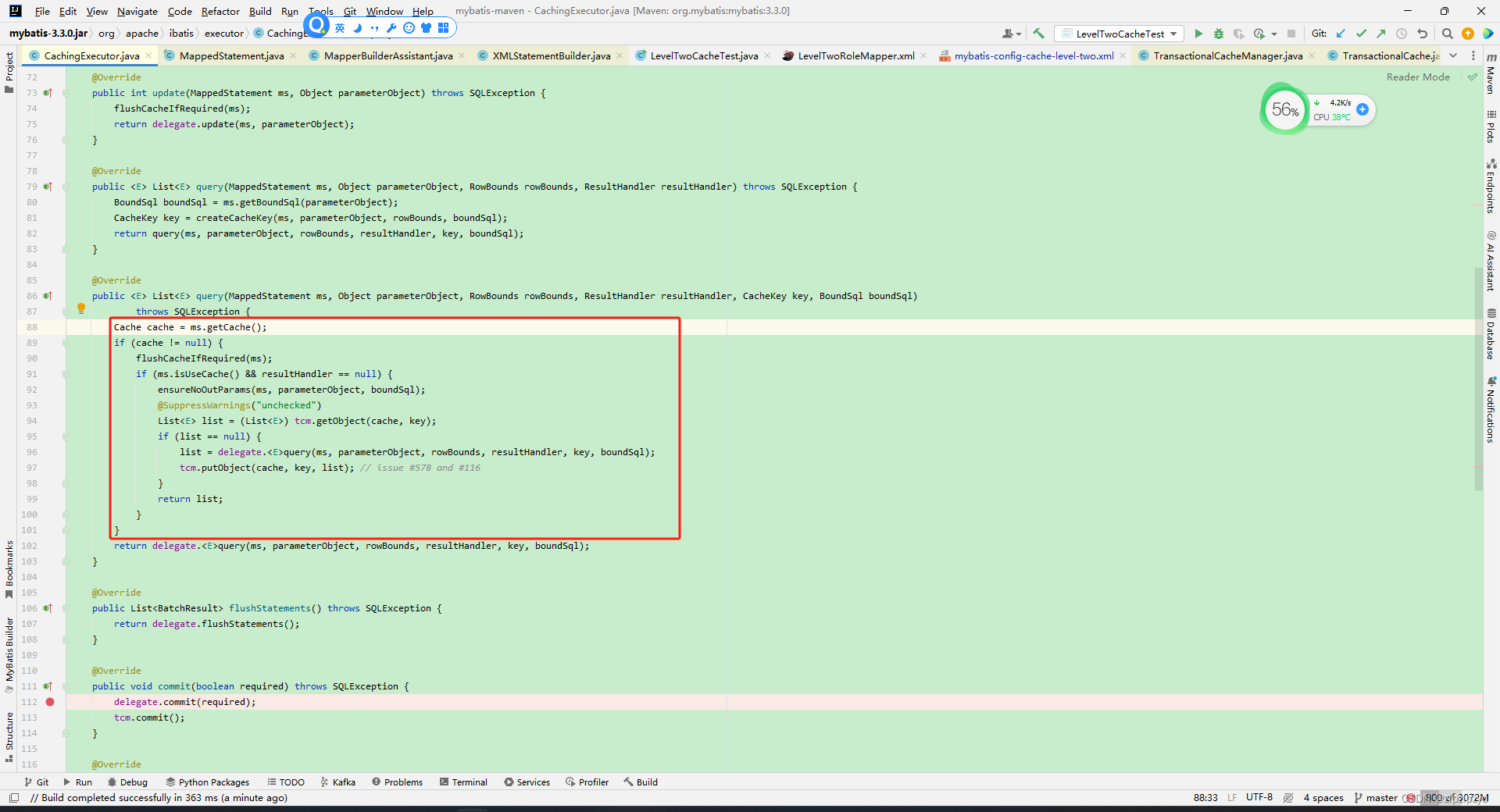
总结
一级缓存针对的是 SqlSession 层次,二级缓存针对的是 mapper 层次。
最终的缓存类都是 PerpetualCache,只是二级缓存通过装饰器模式串联了多个 cache 实现,可以针对不同的功能串联不同的 cache 实现。
一级缓存和二级缓存都有一个缺点,无法解决缓存共用的问题。所以,针对集群项目不建议使用一级缓存和二级缓存,最好禁用。

